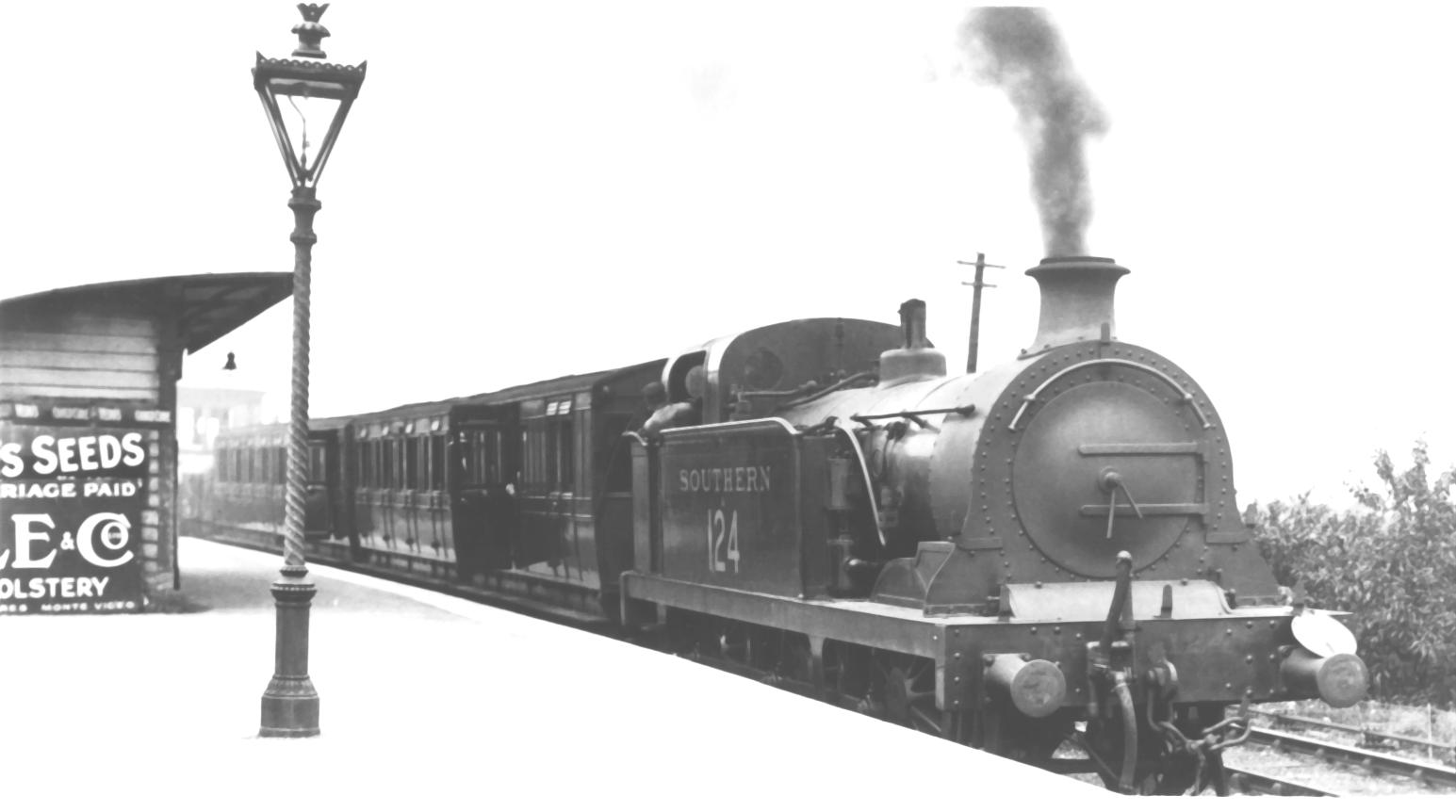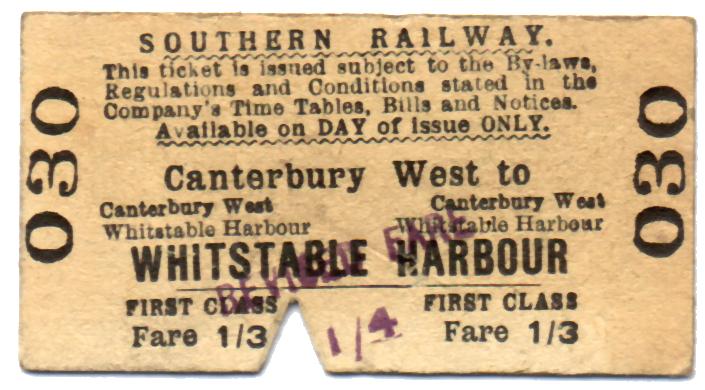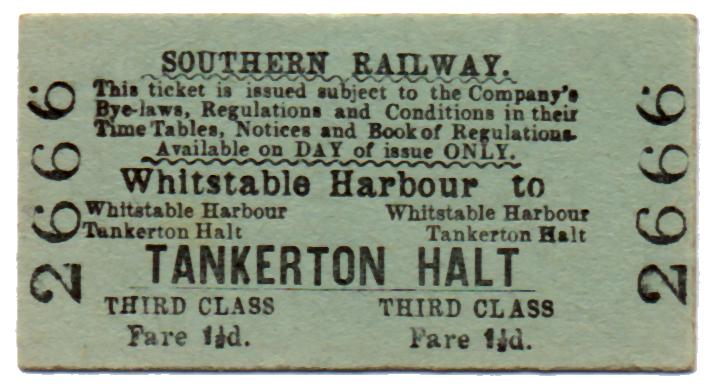
|
The Canterbury & Whitstable Railway 1830 - 1844 |
Ken Elks Copyright © 2002
The Canterbury & Whitstable Railway was one of the earliest railways constructed, the first in the world to regularly haul passenger trains with steam (after the first day in 1825, when locomotives were operated, the Stockton & Darlington used horses as motive power). It was promoted to connect the city of Canterbury with the harbour at Whitstable, some 5 miles distant, and opened on 3 May 1830, preceding the more prestigious Liverpool & Manchester Railway by four months.
The line left a station in North Lane, Canterbury and proceeded more or less in a northerly direction for two miles up a steep gradient (1:41 in places), through the half mile long Tyler Hill tunnel to reach a virtually flat middle section of just over a mile to Clowes Wood. This was followed by a short down incline of approximately 1:30, to reach another flat section at Bogshole, just over half a mile in length, before the 1:50 descent to Whitstable, to give a total line length of 6 miles 1 chain (9.85 km). Winding engines were stationed at the top of the Tyler Hill and Clowes Wood gradients to haul the trains up from Canterbury and Whitstable respectively and along the flat section between. A Stephenson locomotive named "Invicta" was attached to the train to take it from Clowes Wood into Whitstable, but required the assistance of the winding engine for the return journey. On the downhill sections speeds of up to 30 mph were attained. Although not officially designated as stations, passengers were allowed to join or leave the train at Tyler Hill, Clowes Wood and Bogshole, where the trains had to stop to change the winding ropes.
It quickly became obvious that "Invicta" was inadequate to the task of pulling the trains up from Whitstable, even with assistance from the winding rope, and another stationary engine was installed at the top of the Whitstable incline in the summer of 1831. Thereafter "Invicta" was just used on the short level section to Bogshole.
Despite the rapid development of Whitstable Harbour, the railway failed to prosper as intended, and a Sunday passenger service was introduced in an effort to boost revenues. The line became the first in the world to introduce season tickets, costing two guineas (£2. 2s.) for just over seven months travel, in 1834. A family season ticket for the same period cost five guineas. The company also introduced containers for the transport of goods direct from railway wagon to ship and vice versa.
In 1835 Isambard Kingdom Brunel visited the line to conduct experiments related to his proposals for the Great Western Railway, using them to disprove his critics. The same year, a botched attempt to improve the performance of "Invicta" led to the engine being laid aside, trains thereafter being hauled only by the stationary engines. In 1839, faced with mounting debts, the C&WR tried to sell "Invicta" but could find no buyers. Later the engine was presented to the Canterbury City Corporation and for many years stood outside the Riding Gate on a plinth. Now restored to something like its original state it is on display in a Canterbury museum.
By 1843 the winding engines needed costly repairs and the harbour at Whitstable suffered badly from silting, both adding to the company's financial woes. It was decided that an approach would be made to the newly formed South Eastern Railway for them to take over the line. The SER's lease came into effect on 29 September 1844 and on 13 December 1853 the C&WR was dissolved and the line became the property of the SER.
Epilogue
The Canterbury & Whitstable branch as it became, popularly known as the "Crab & Winkle Line", continued in operation for nearly a 100 years, until 1952, though passenger services ceased in 1931. The SER first had to upgrade the whole of the former C&WR then replace the stationary winding engines with locomotives, during which passenger services were suspended. The line reopened on 6 April 1846, just two months after the SER had opened its own station at Canterbury. The old North Lane terminus became a goods yard and a curve put into take the branch into the platforms of the new station. The construction of a new sluice at Whitstable Harbour by the SER solved the silting problems and the line entered on a period of reasonable prosperity, despite the loss of London traffic to the London, Chatham and Dover when their line reached Whitstable in 1860 and some freight to the Faversham Creek branch of the same railway. Among improvements to the branch, the SER built a new station at Whitstable outside the harbour, which opened on 28 January 1895, the old station being closed and used only for goods traffic.
When the SER and LCDR combined to form the South Eastern & Chatham Railway in 1899 proposals were put forward to connect the former C&WR and LCDR lines with a loop but this was vetoed by the Board of Trade inspectors. More successful were applications to open intermediate halts, one at Tyler Hill, named Blean & Tyler Hill Halt, in 1908, South Street on 11 July 1911, and a third, where the harbour branch crossed the Kent Coast mainline near Whitstable Town station, called Tankerton Halt on 1 July 1914. Despite this, competition from motor buses grew rapidly in the 1920's and the post-grouping Southern Railway, which took over from the SECR in 1923, decided to close the line for passengers, the last train running on 1 January 1931. During the second World War, the line was busy with the transport of munitions to the harbour and there was a continual healthy flow of coal over the branch, but when the war ended there was insufficient traffic to justify its retention, aggravated by the fact that the harbour had again become badly silted. A request by Whitstable Council that the line be reopened for passengers to reduce traffic congestion in the town was refused by the Southern Railway and following nationalisation in 1948 the line was finally closed by British Railways on 1 December 1952. This proved not to be the end though. Due to severe flooding on the North Kent coast, which damaged the line between Faversham and Whitstable, the former C&WR was reopened briefly, between 5th and 28th February 1953, to carry vital freight to Whitstable.

Whitstable Harbour station in 1927


Further reading:
"The Canterbury & Whitstable Railway" by Brian Hart, published in 1991 by
Wild Swan Publications Ltd, Didcot, Oxon OX11 8DP